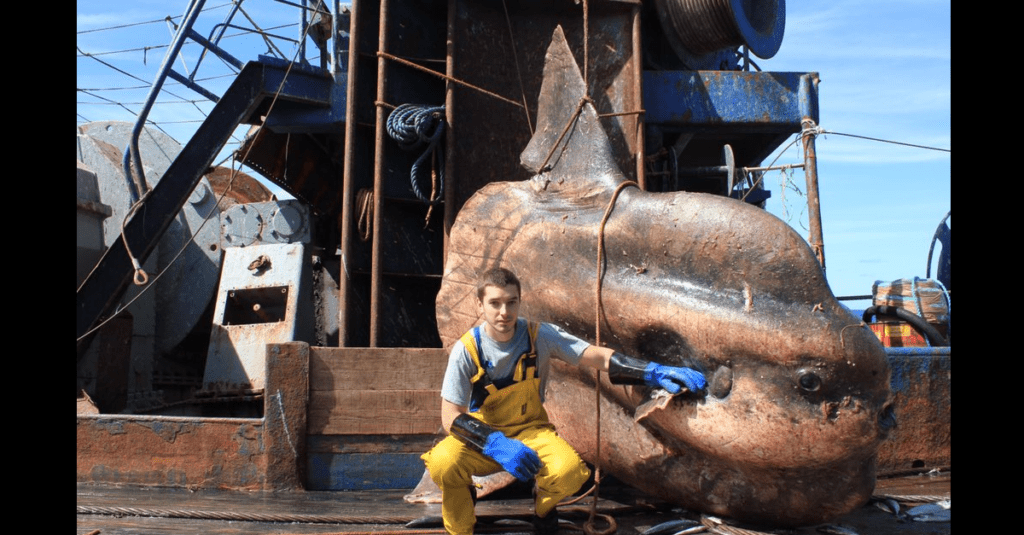Image credits: Роман Федорцов / Twitter
Roman Fedortsov is a Russian deep sea fisherman who documents every unreal-looking deep-sea creature unlucky to get tangled in the nets. His Twitter is one of the most impressive sources of deep-sea creatures I’ve ever seen in my life.
Народ до сих пор спорит… кто это? #рыбалка #промысел #изглубины #рыба #fish #fishing #ты_кто? pic.twitter.com/76VLcK20rB
— Роман Федорцов (@rfedortsov) November 21, 2016
First of all… wow! You rarely see such a stunning diversity in research institutes, let alone in some social media profile. You might think you know what an anglerfish looks like, but seeing one upclose and in someone’s hand is a completely different thing. But Fedortsov, who’s based in Murmansk, Russia, and was recently in the waters of Morocco and Mauritania doesn’t seem the least bit phased.
I'm on the vessel 🚢… this is a Engraulis pic.twitter.com/3vOGretZZU
— Роман Федорцов (@rfedortsov) January 6, 2017
Before we have a deeper look at some of these spectacular creatures, I’d just like to say one thing: it’s truly unfortunate that these creatures get caught in nets. The depletion of deep-sea species is a matter of international concern, and the vast majority of the fishing is unsustainable, and deep-sea populations require much more time to re-establish themselves than surface species. The best place for a species is, undoubtedly, in its own habitat.
https://twitter.com/rfedortsov/status/808997626666426368
It’s a sad thing this happens, but if anything, we should appreciate the glimpse we get into this part of the Earth. We often say we know Mars better than our own oceans and that’s true in many ways. Less than 0.05 percent of the ocean floor has been properly mapped and we’re only scratching the surface in terms of biodiversity. These creatures seem surreal to most people, but they’re very much real, and they’re inhabitants of this planet just like you and I. It’s truly spectacular that we get a chance to see them – and through a social media account, of all places! My hat goes off to mister Fedortsov.
То ли рыбы Х, то ли фантастическая двойка… Очередная порция жителей глубин моря. #рыба #fish pic.twitter.com/TFTax13w6k
— Роман Федорцов (@rfedortsov) October 22, 2016
Most of these creatures are dark brown or black, or deep red. This happens because they live in the mesopelagic zone of oceans, 200-1000 meters deep (660 to 3300 feet), in the so-called Twilight zone, where light just barely gets through. In these conditions, creatures are black to avoid being detected (as black absorbs more light). Rather interestingly, this also applies to red creatures, as NOAA explains:
“The black animals absorb all colours of light available, and the red animals appear black as well; there is no red light to reflect and their bodies absorb all other available wavelengths of light. Thus red and black animals predominate.”
As can be seen below:
Очередная #рыба в ленту) pic.twitter.com/CUwmzBJkDO
— Роман Федорцов (@rfedortsov) July 5, 2016
These are just some of his photos. The list is extremely long and his profile is constantly being updated with new catches, so we’ll just present some of our favorite ones.
Для вновь "прибывших" на борт-очередной подводный хищник #промысел #рыба #фото_с_борта_судна pic.twitter.com/o8j1EzTTRZ
— Роман Федорцов (@rfedortsov) December 16, 2016
Мелкое рогатое прозрачное… кто ты? #рыба #улов #из_глубины #промысел #fish pic.twitter.com/Y4FtfNcNuP
— Роман Федорцов (@rfedortsov) October 27, 2016
White Walkers (Game of Thrones) or Zombie (Walking Dead). My Sea Version. Ходоки или Ходячие? Моя Морская Версия pic.twitter.com/5LcY5s4QeJ
— Роман Федорцов (@rfedortsov) February 10, 2017
Cheshire Cat. My Sea Edition. Чеширский кот. Моя морская версия. Съедобен. pic.twitter.com/w67vEZ0u4E
— Роман Федорцов (@rfedortsov) February 6, 2017







